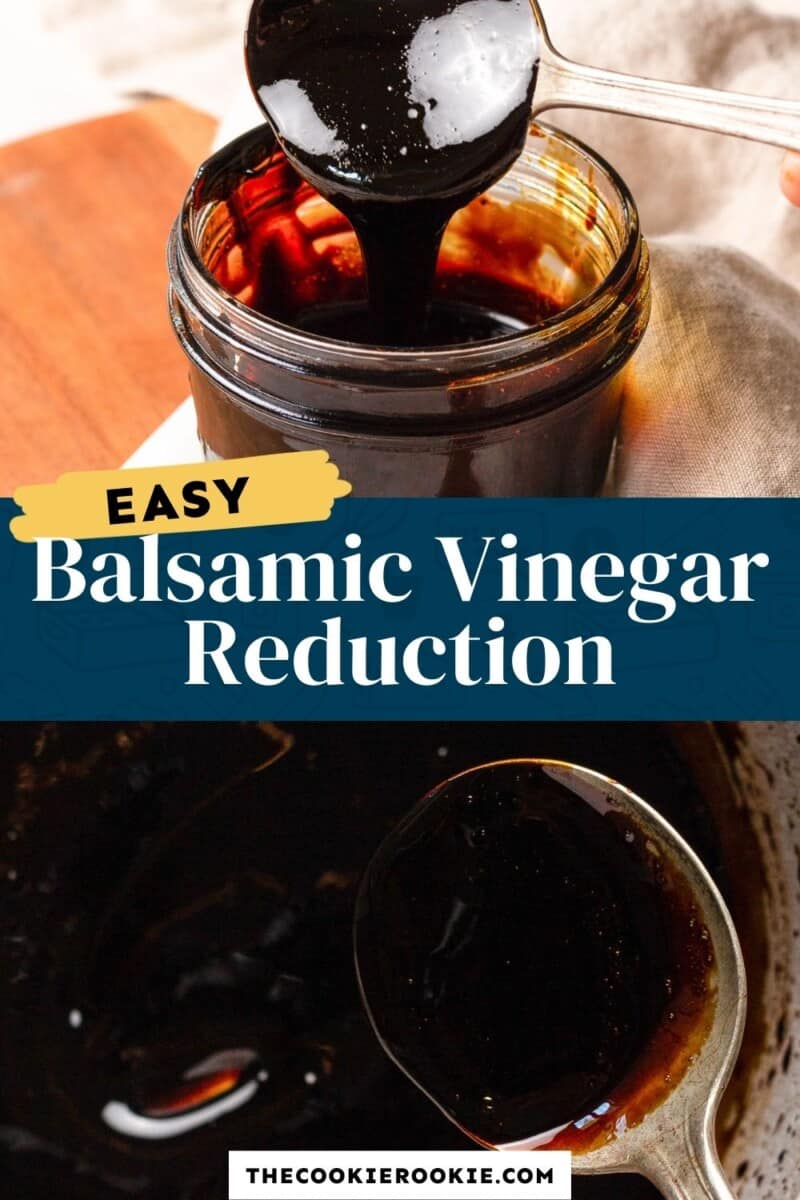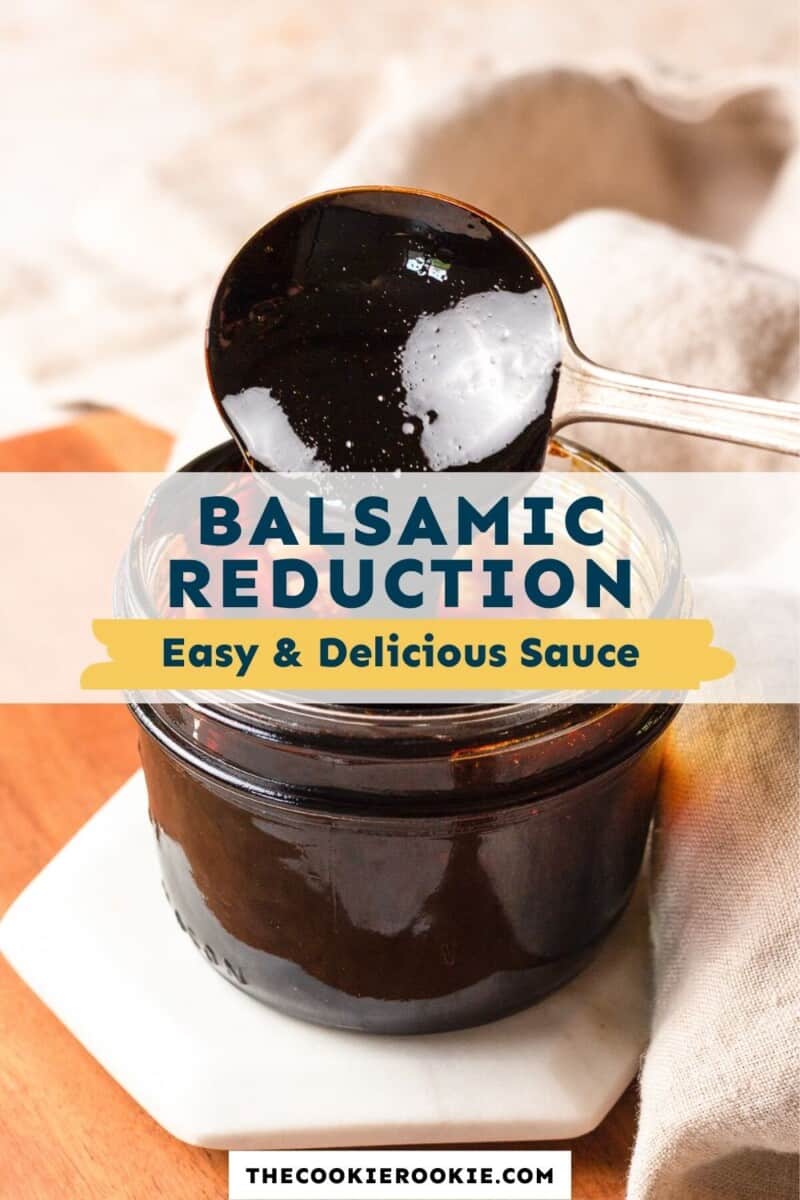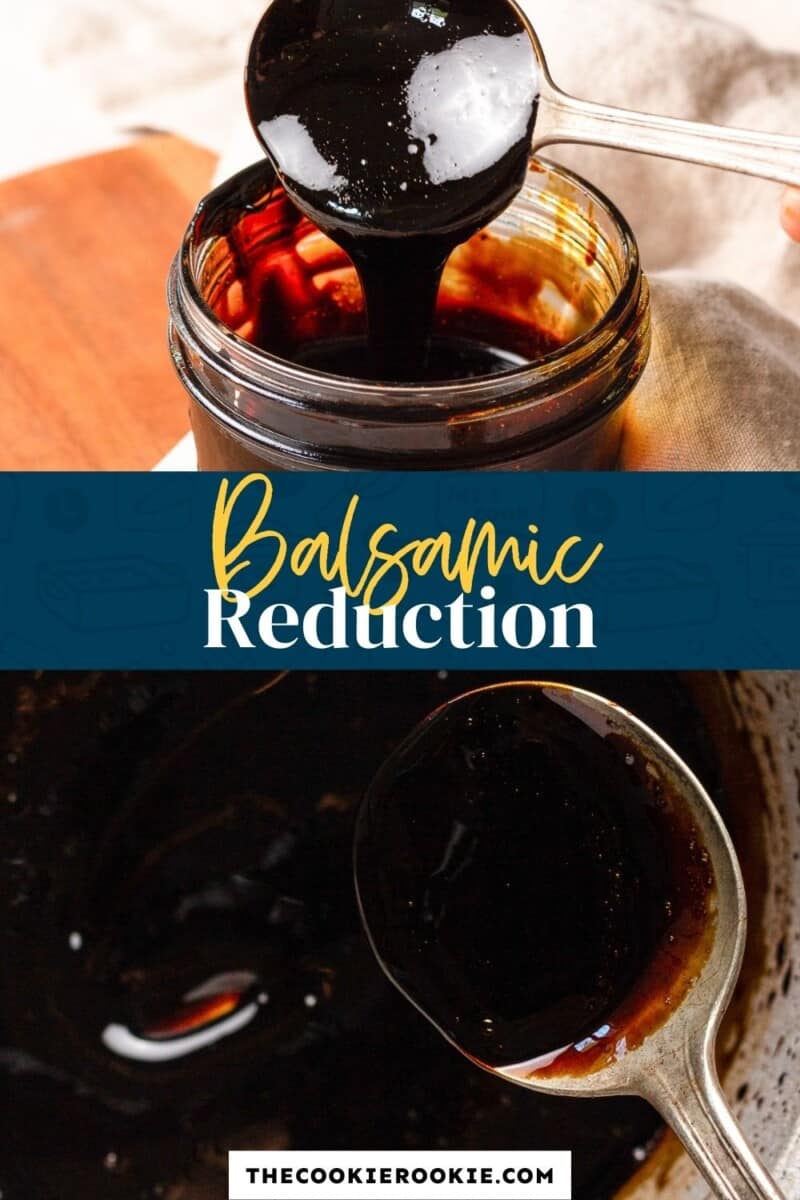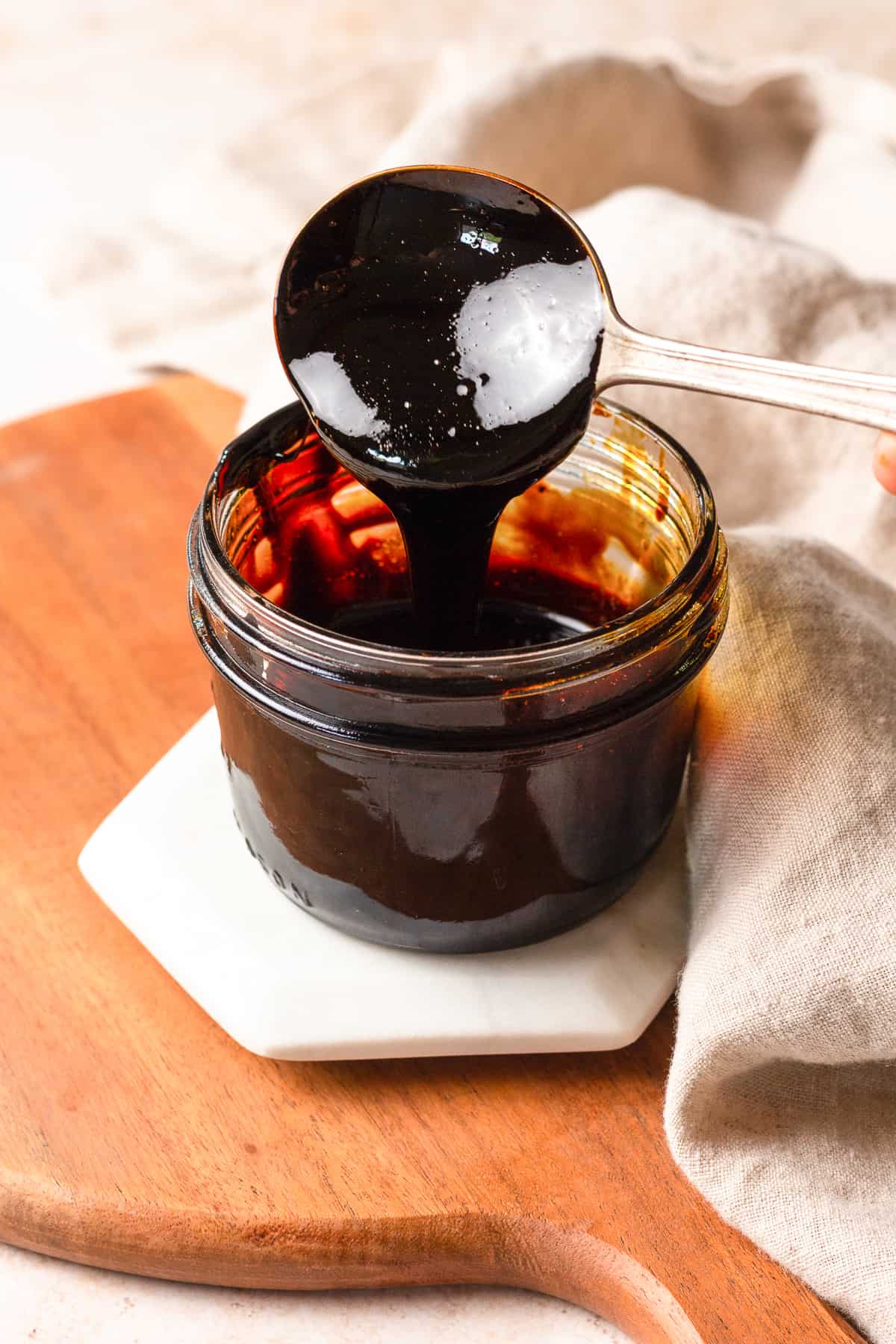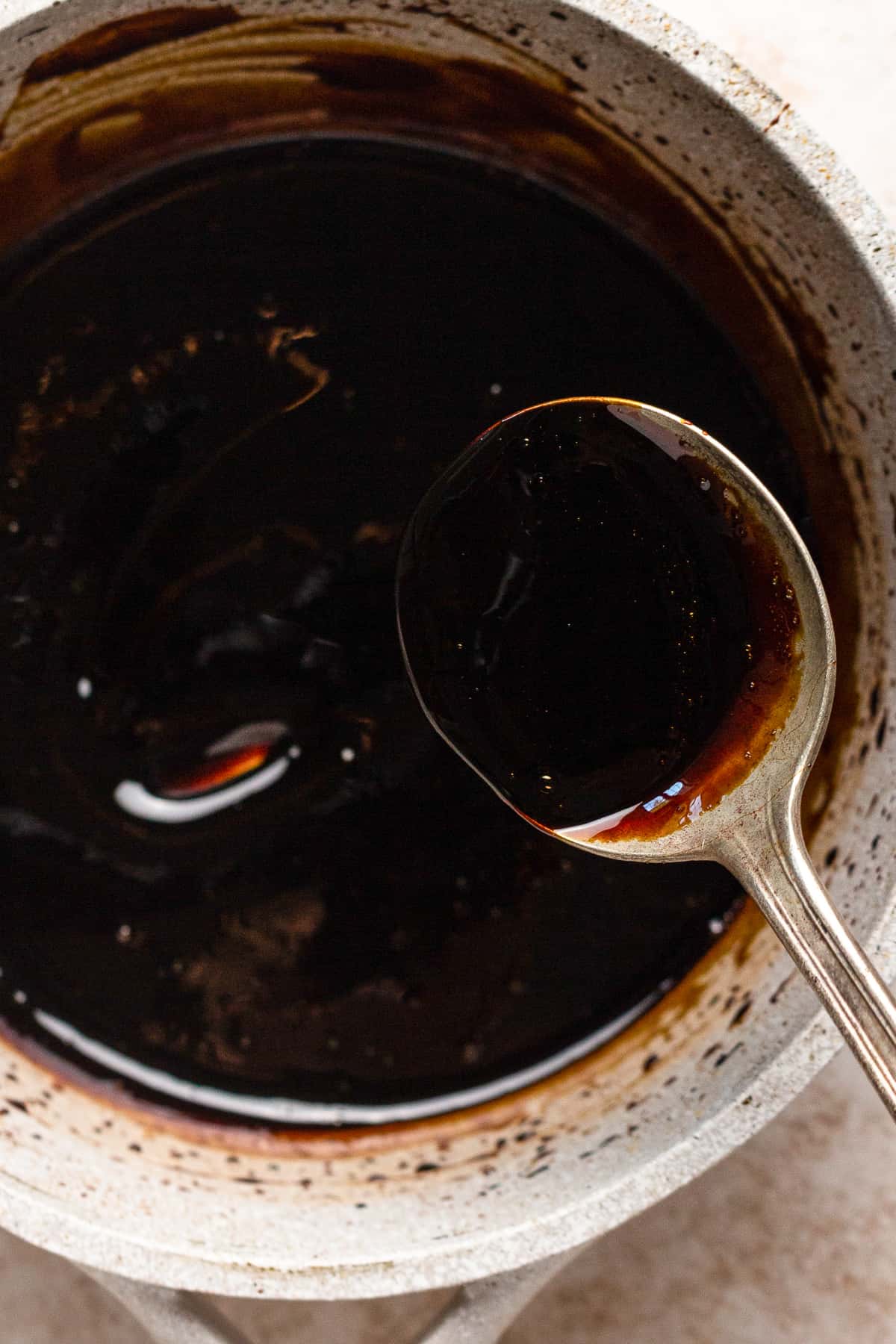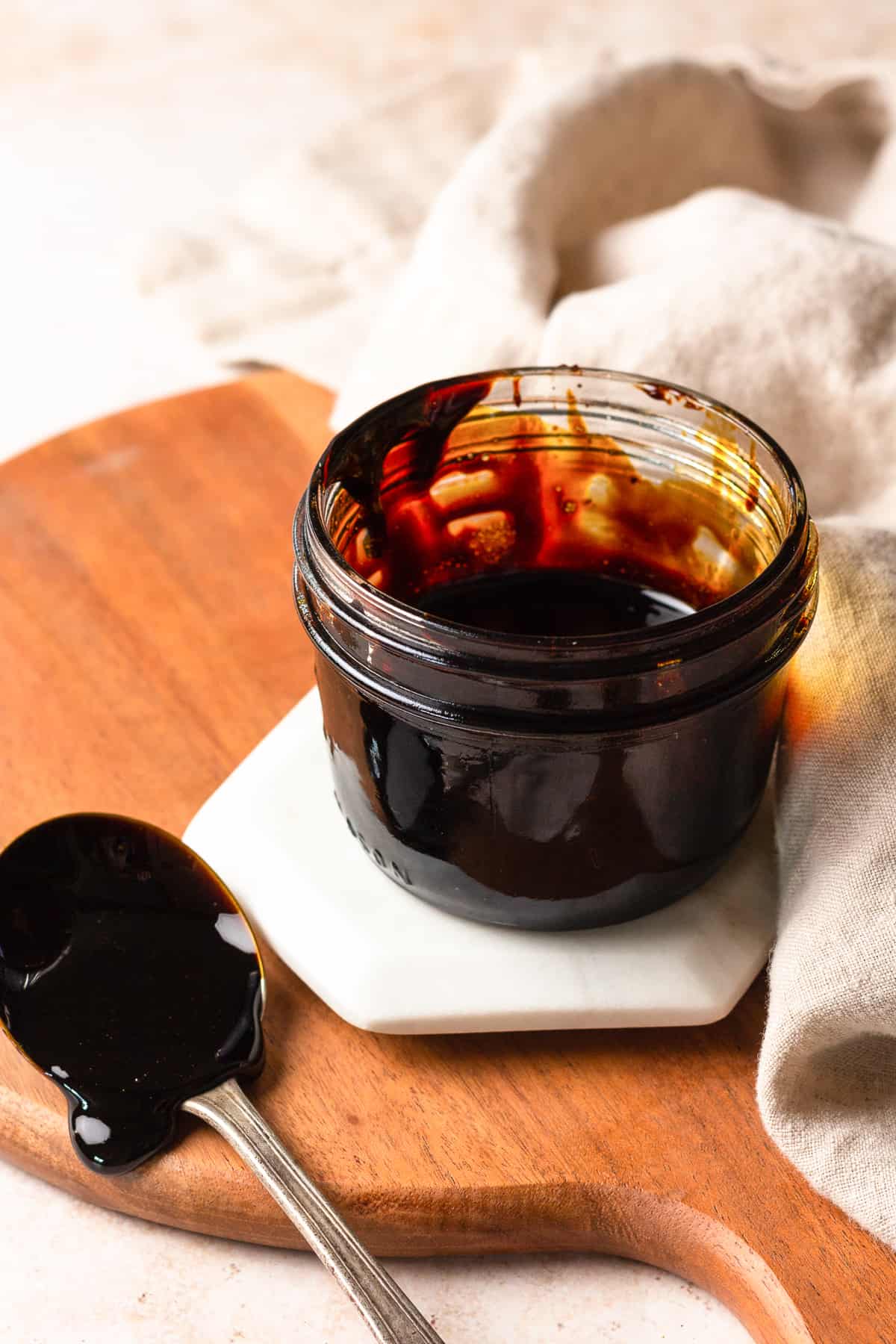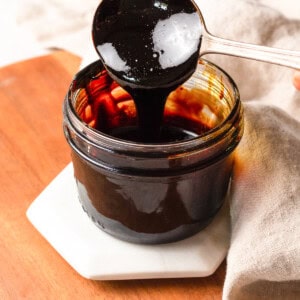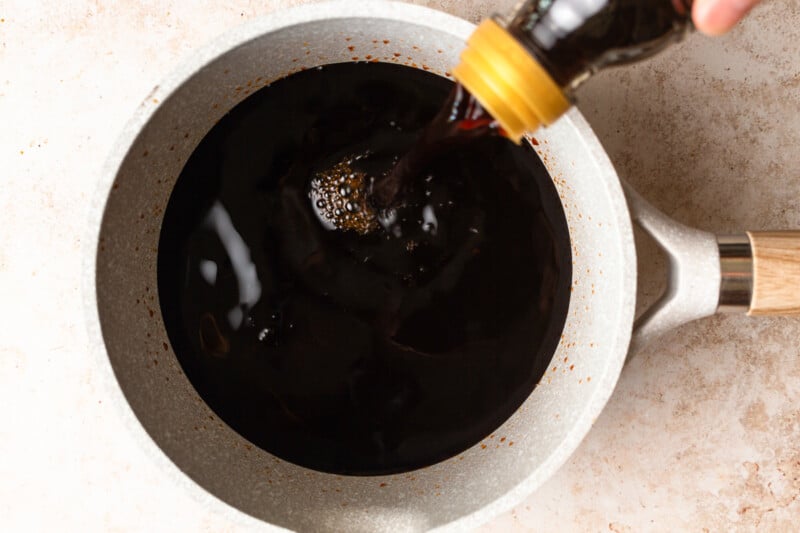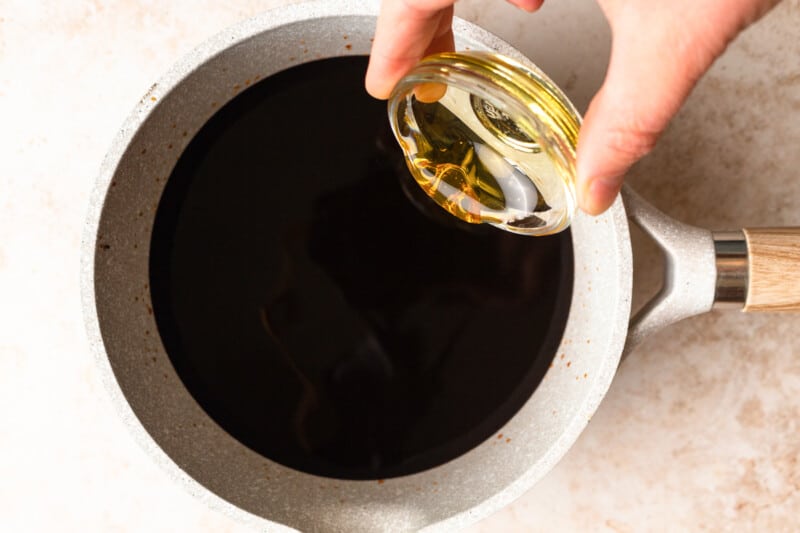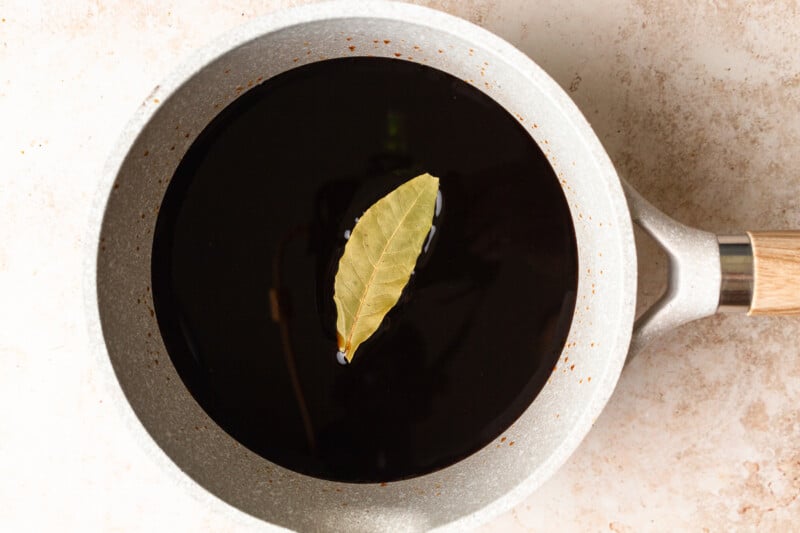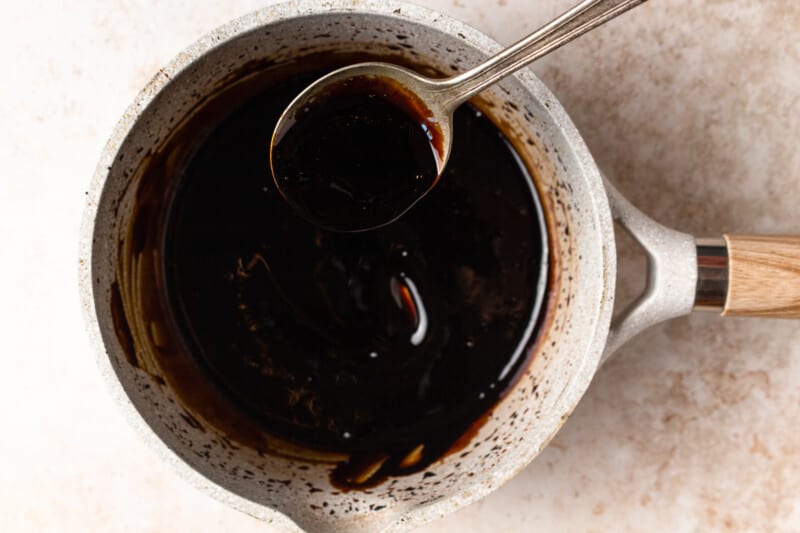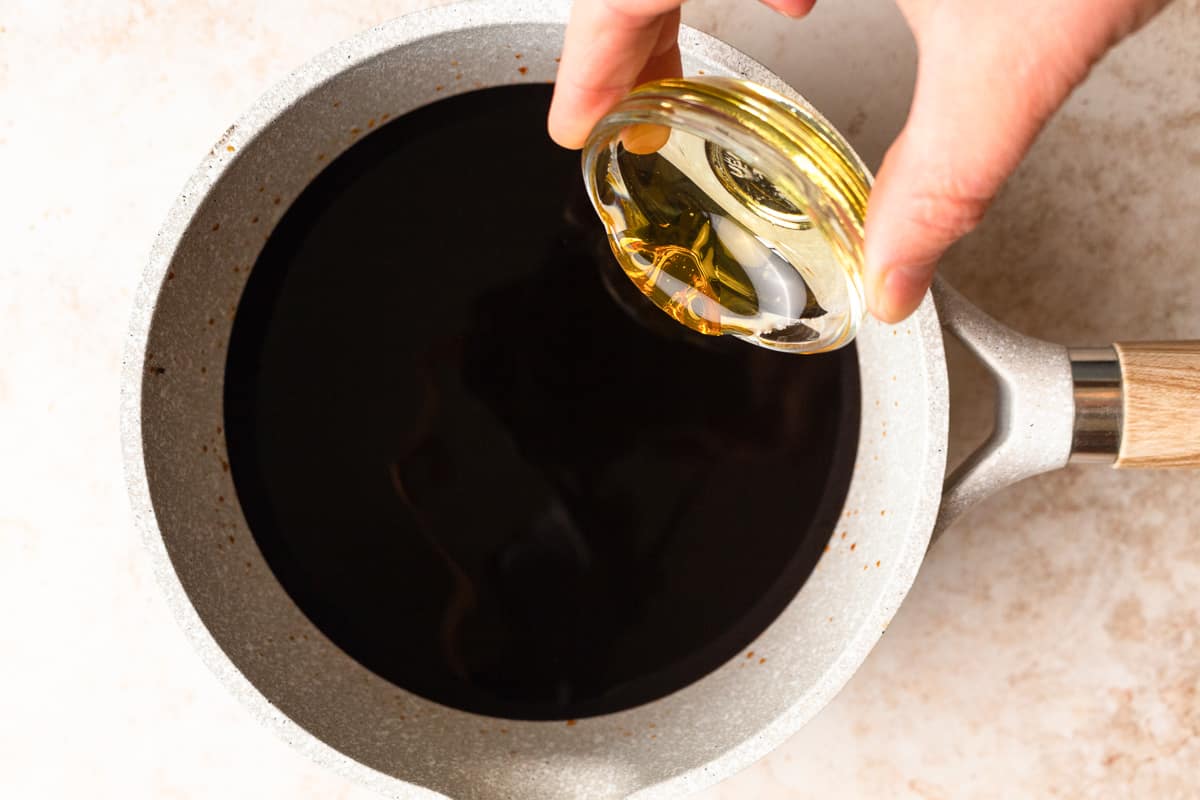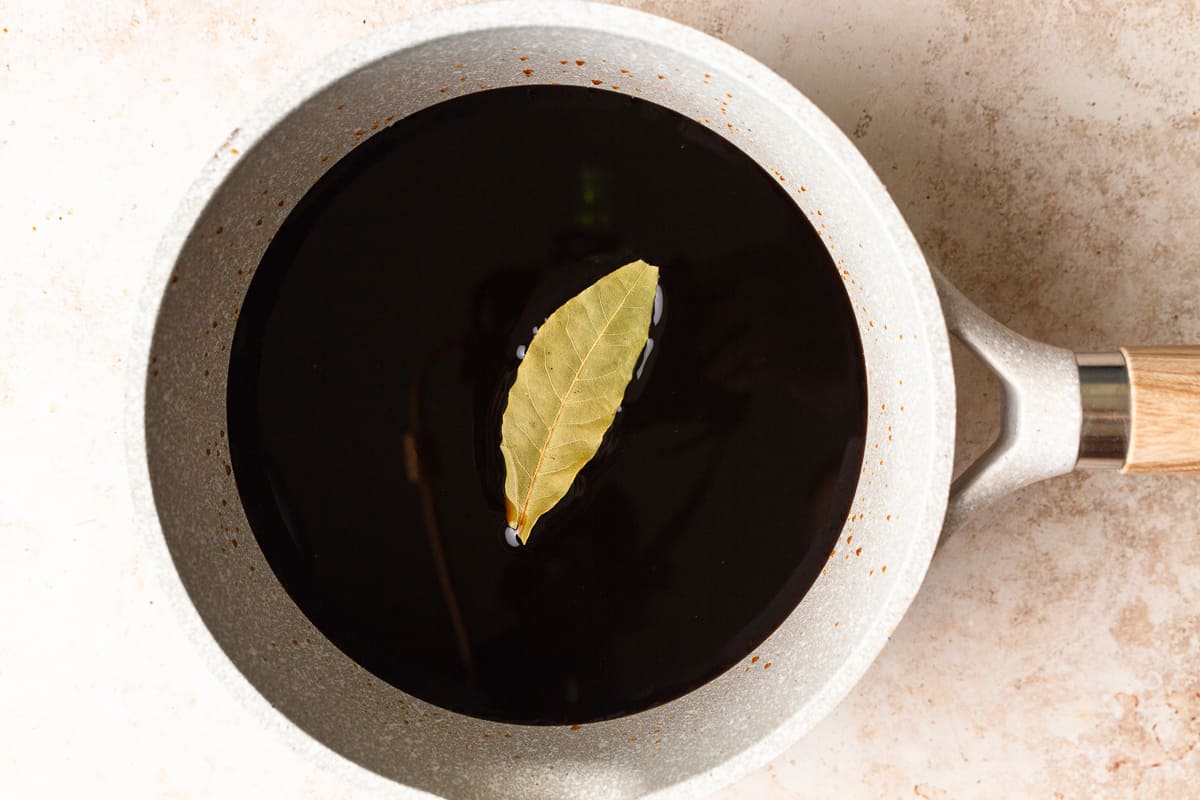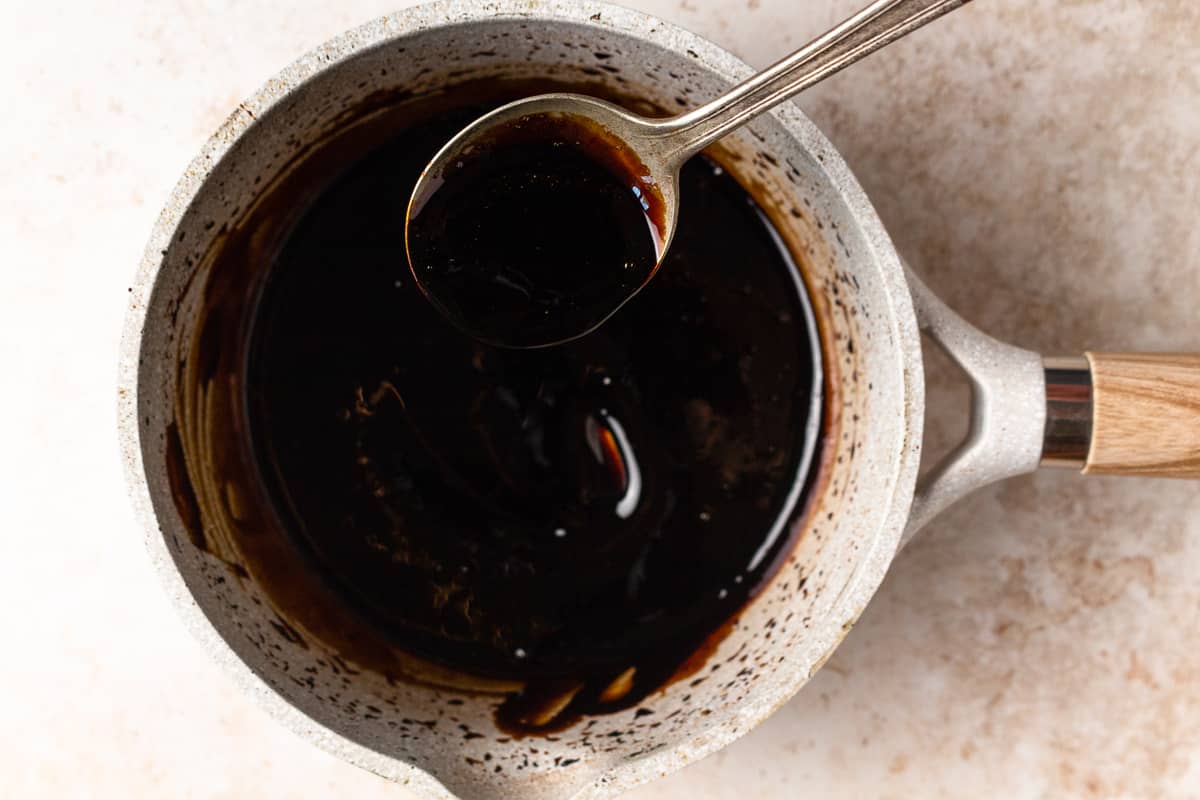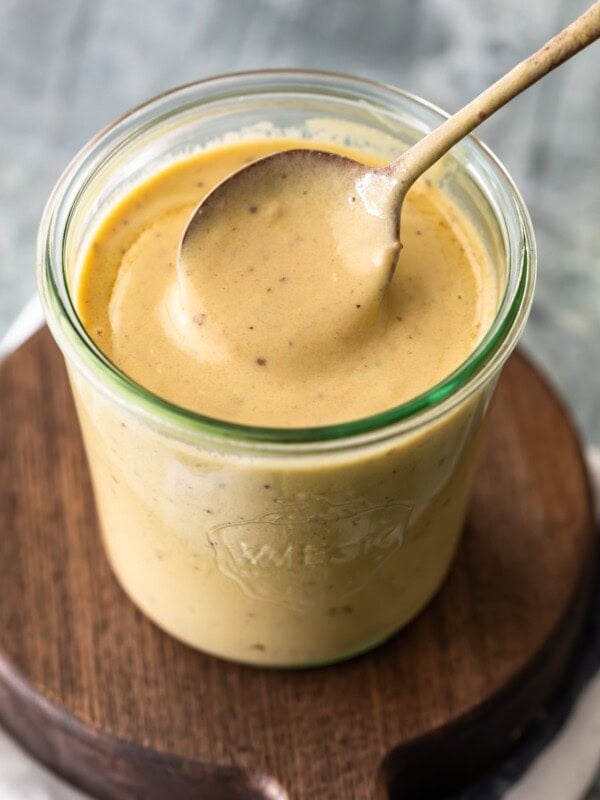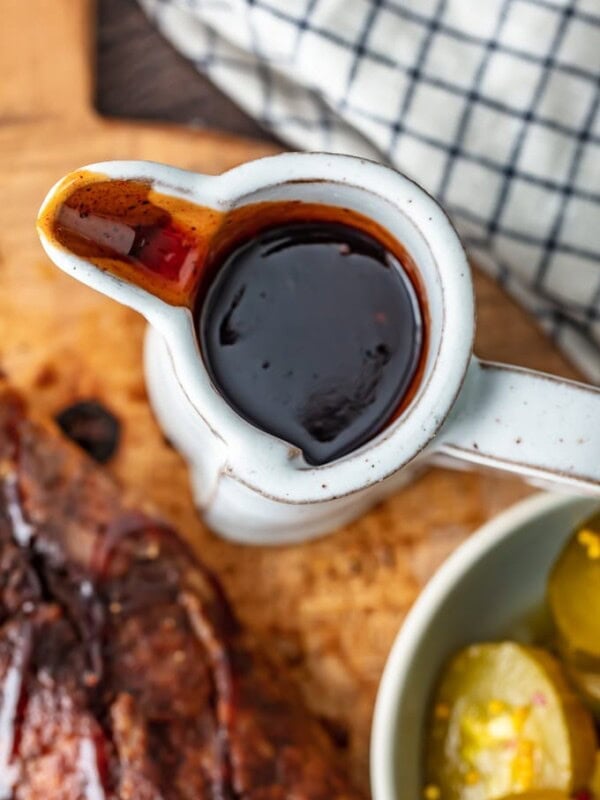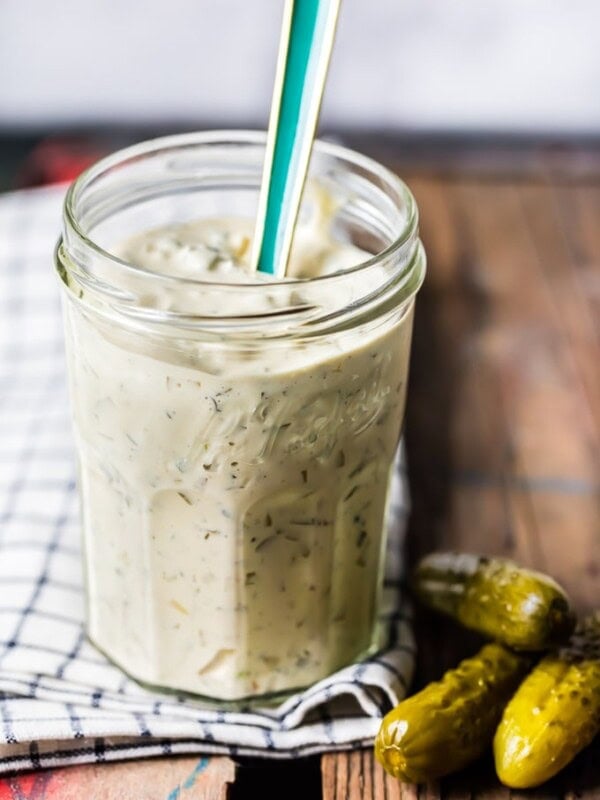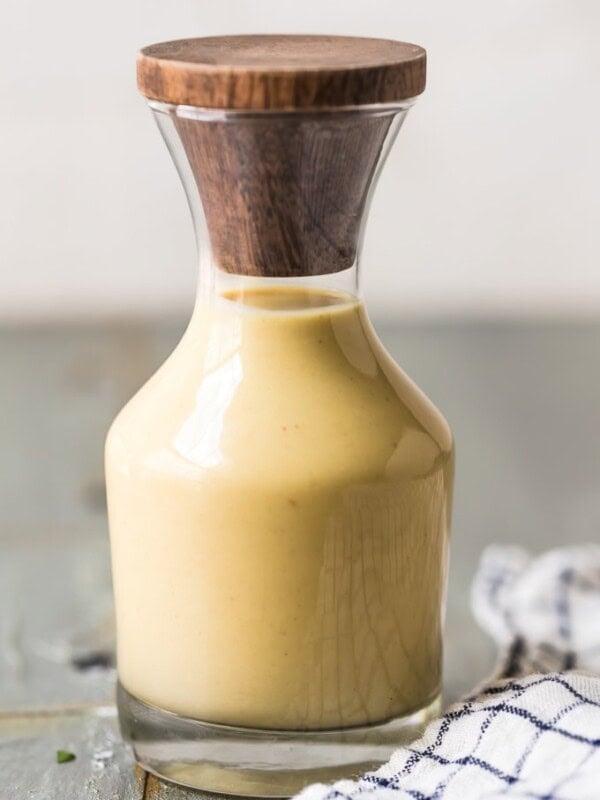A balsamic reduction (also called balsamic glaze) is literally just a reduction of balsamic vinegar, which means cooking or heating the vinegar to remove the water. This process concentrates the sugars, which creates a sweeter, more intense flavor. Reducing also leads to a thicker, more syrupy consistency. I use this stuff all the time, and it’s such an easy way to make any dish more flavorful!
Ingredients for Balsamic Glaze
Balsamic Vinegar: This is the 1 ingredient really needed for this recipe. Other vinegars can be reduced in the same manner, but it won’t have the same rich and sweet flavor. Honey: I use honey as my sugar component to help sweeten the glaze. Seasonings: I use bay leaf, and then add a hint of another herb or spice to get the flavor I want. Try oregano, basil, rosemary, or even cinnamon.
Tips for Success
Be sure to reduce the heat and let it simmer instead of boil. Keeping it at a boil point will heat the vinegar too quickly, and can ruin the overall flavor and consistency. It can take anywhere from about 5-20 minutes to reduce, depending on your desired consistency (thicker consistency = longer simmer time). If the syrup becomes too thick, add a few drops of water and continue heating until it’s more pourable.
How to Store and Reheat
Let the balsamic glaze cool completely before storing, then pour it into an airtight container. I like using a mason jar, but anything with a tight seal is fine. Because of the vinegar’s acidic content, you can store it at room temperature for up to 1 week. After that, move it to the refrigerator. To use leftovers, gently warm the the reduction in a saucepan or in the microwave. Add a small bit of water to help make it easy to pour or drizzle.
Uses
Balsamic reduction serves as a sauce, as a glaze, as a syrup, or as a dressing. I use it with salads, vegetables, fruits, meats, cheese, desserts, appetizers, dinner…
Drizzle it over a chopped caprese salad. Use is as a glaze for chicken breast or salmon. Roast veggies (like carrots, Brussels sprouts, or tomatoes) in it. Drizzle it on top of grilled peaches or other fruits. Serve it on your next charcuterie board.
How to Make Balsamic Reduction Step by Step
Pour: Pour 16 ounces of balsamic vinegar into a medium-sized saucepan. Add Honey: Add 1-2 tablespoons of honey and stir until it fully dissolves. Season: Add 1 bay leaf and any other optional herbs or seasonings of your choice. Reduce: Bring the balsamic vinegar to a boil over medium heat, then reduce heat and simmer until it starts to get syrupy. Watch closely so it doesn’t burn. When it reaches your desired consistency, remove it from heat, remove the bay leaf and strain through a sieve if other herbs have been added. Then let it cool to store, or use.
